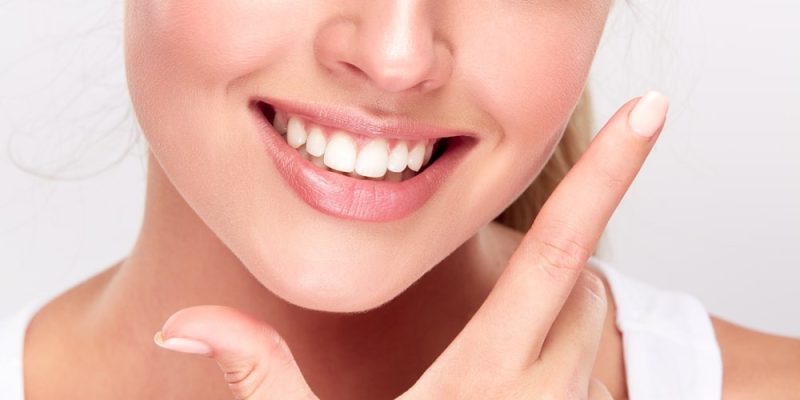A beautiful smile relies on a solid foundation of consistent dental wellbeing. This involves a dedicated daily routine combined with regular visits to a dental practice. Organisations like Banning Skin Ltd often highlight the connection between a healthy mouth and overall confidence.
Preventative measures offer the best strategy for long-term success. Brushing and flossing each day helps to keep teeth and gums in excellent condition. These simple actions stop minor issues from developing into more serious complications.
Seeking professional support is equally crucial. Regular check-ups allow dentists to identify concerns at an early stage. Practices such as Banning Dental focus on these preventative examinations to ensure optimal outcomes for their patients.
This proactive approach is not just about aesthetics. It supports proper nutrition and contributes significantly to a person’s general wellness. Establishing effective habits early in life delivers benefits that last for decades.
Key Takeaways
- Consistent daily hygiene is the cornerstone of dental wellbeing.
- Professional check-ups are essential for early problem detection.
- Preventative strategies provide the best long-term results for your smile.
- Good dental habits are vital for overall nutrition and general health.
- Establishing a routine early in life offers significant lifelong advantages.
- A combination of personal care and professional oversight achieves the best outcomes.
Understanding the Fundamentals of Oral Health
Proper dental maintenance forms a critical component of comprehensive personal wellbeing strategies. This foundation connects daily habits with long-term physiological outcomes.
The mouth represents more than just teeth and gums. It functions as an indicator of systemic conditions throughout the body.
The Role of Oral Hygiene in Overall Health
Regular cleaning routines influence cardiovascular and respiratory systems. Bacteria from poor oral practices can enter the bloodstream.
This microbial transfer may contribute to inflammatory responses elsewhere. Maintaining excellent oral hygiene helps protect against such complications.
Research shows connections between dental bacteria and conditions like diabetes. The mouth’s microbial balance affects metabolic regulation.
Common Oral Health Challenges
Many adults face issues like gum disease and tooth decay. These problems often stem from inconsistent cleaning habits.
Bad breath and infections frequently develop when hygiene standards decline. Early detection prevents minor concerns from becoming serious.
Understanding these fundamental relationships motivates better daily practices. A proactive approach to dental maintenance supports comprehensive wellbeing.
Daily Routines for Effective Oral Hygiene
Daily rituals create the foundation upon which excellent dental outcomes are built. Consistency transforms simple actions into powerful habits that protect against common dental issues.
Best Practices for Brushing and Flossing
Individuals should brush teeth at least twice day with fluoride toothpaste. The evening session is particularly important to remove accumulated debris.
Proper technique involves systematically covering all tooth surfaces. This ensures no areas are missed during the cleaning process.
Interdental cleaning completes the daily routine. Floss or interdental brushes reach spaces between teeth where standard brushing cannot access.
Choosing the Right Toothbrush and Toothpaste
Selecting appropriate tools supports effective good oral hygiene. A quality toothbrush with soft bristles protects enamel while removing plaque.
The size and shape should allow comfortable access to all teeth surfaces. Electric options can enhance cleaning efficiency for some users.
Fluoride toothpaste strengthens enamel during each brushing session. This daily practice contributes significantly to long-term dental wellbeing.
Essential Oral Health Care Practices
The most effective routines for mouth cleanliness incorporate gentle care for gums and the tongue. This integrated approach ensures all areas contributing to overall dental wellbeing receive attention.
Techniques for a Complete Oral Routine
A thorough routine goes beyond brushing teeth. It should include gentle stimulation of the gums to improve circulation and remove hidden debris.
Cleaning between the teeth gums is a vital part of this process. When starting, slight bleeding may occur as tender gums adjust.
This typically subsides with regular practice. Persistent issues warrant consultation with a dental professional.
Brushing the brush tongue twice daily is equally important. This practice significantly reduces bacteria that cause bad breath.
It forms a crucial part of combating the sources of unpleasant breath. Consistency with these steps protects each tooth and the surrounding tissues.
Key Components of a Comprehensive Routine
| Practice | Focus Area | Primary Benefit | Frequency |
|---|---|---|---|
| Interdental Cleaning | Spaces between teeth | Removes plaque from gums | Daily |
| Brush Tongue | Surface of the tongue | Reduces bacteria for fresher breath | Twice Daily |
| Gentle Gum Care | Teeth gums margin | Stimulates circulation and health | During brushing |
Adopting these practices creates a robust foundation for long-term success. They work together to maintain the entire mouth environment.
Diet, Smoking, and Their Impact on Oral Health
What individuals eat and drink, along with smoking behaviours, directly influences the condition of their teeth and gums. These lifestyle factors represent modifiable risks that people can address through informed choices.
Balanced Diet and Its Benefits for Your Teeth and Gums
A nutritious diet provides essential building blocks for strong teeth. Sugary food and drinks are primary contributors to tooth decay.
When bacteria process sugar, they produce acids that attack enamel. This process initiates decay that can progress to cavities.
Even sugar-free fizzy drinks contain acids that erode tooth surfaces. A balanced approach emphasises fruits, vegetables, and proteins while limiting sugary items.
How Smoking and Alcohol Affect the Mouth
Smoking poses multiple threats to dental wellbeing. It significantly increases the risk of developing gum disease by impairing blood flow.
Tobacco use is a major factor in mouth cancer development. The combination of smoking and excessive alcohol consumption amplifies this risk considerably.
Alcoholic beverages often contain acids that dissolve tooth enamel. Continued exposure may necessitate extensive dental work to restore damaged teeth.
Comparative Risks to Dental Wellbeing
| Factor | Primary Effect | Associated Conditions | Preventive Measures |
|---|---|---|---|
| Sugary Food | Acid production | Tooth decay, cavities | Limit consumption, rinse after eating |
| Smoking | Tissue damage | Gum disease, mouth cancer | Cessation programmes, regular check-ups |
| Alcoholic Drinks | Enamel erosion | Tooth sensitivity, decay | Moderate consumption, water rinsing |
| Fizzy Drinks | Acid attack | Enamel loss, decay | Choose water, use straws |
Understanding these relationships empowers individuals to make better choices. Simple adjustments to diet and habits can yield significant improvements in dental outcomes.
Choosing the Right Oral Care Products
Navigating the vast selection of dental products available today requires informed decision-making to achieve optimal results. The right tools can transform daily routines into more effective practices.
Fluoride Toothpaste and Its Advantages
Fluoride toothpaste represents the gold standard for daily dental maintenance. This ingredient strengthens enamel through a process called remineralisation.
It provides proven protection against decay when used consistently. Many people wonder about fluoride safety, but evidence confirms its benefits outweigh concerns when used as directed.
Selecting the Best Toothbrush and Interdental Tools
Choosing an appropriate toothbrush involves considering bristle type, head shape, and handle design. Both manual and electric options offer distinct advantages depending on individual needs.
Interdental tools complete the cleaning process. Floss, interdental brushes, and water flossers each serve specific purposes. Dental professionals can recommend which products suit particular dental conditions best.
Proper technique matters more than expensive products. Consistent use of well-chosen tools ensures effective cleaning when people brush teeth.
Understanding Routine Dental Examinations
Scheduled dental visits enable early detection of potential dental issues before they escalate. These appointments form a crucial part of preventive dental maintenance.
Regular examinations provide comprehensive assessment of dental structures. They help identify concerns at manageable stages.
What to Expect During a Dental Check-Up
The dentist examines all soft tissues of the mouth and teeth systematically. This includes gums, tongue, and cheek surfaces.
During the assessment, the dentist may ask about general wellbeing and medications. They also inquire about any recent problems with teeth or mouth.
These questions help understand factors affecting dental conditions. The dentist looks for signs of decay, inflammation, and other concerns.
Guidelines on Visit Frequency and Enhanced Preventive Treatment
Since November 2023, visit frequency is personalised based on individual needs. Some people see their dentist more frequently than every six months.
Others with good dental conditions may have longer intervals. The dentist decides appropriate timing during each examination.
After assessments, enhanced preventive treatment may be recommended. This includes personalised advice on cleaning techniques and lifestyle factors.
Components of Comprehensive Dental Examinations
| Examination Area | Purpose | Frequency Assessment |
|---|---|---|
| Teeth Surfaces | Detect decay and wear | Based on cavity risk |
| Gum Tissues | Identify inflammation | Determined by gum condition |
| Soft Tissue Screening | Check for abnormalities | Regular monitoring essential |
| Existing Dental Work | Evaluate integrity | Varies by restoration type |
Maintaining routine dental appointments ensures ongoing monitoring. Early identification of problems leads to simpler treatments and better outcomes.
Lifestyle Adjustments for a Healthier Mouth
Strategic eating patterns offer powerful protection against common dental issues that affect many adults. These adjustments work alongside daily cleaning routines to maintain excellent dental wellbeing.
Incorporating Healthy Eating Habits
Meal timing significantly influences dental outcomes. Eating sugary or acidic foods as part of main meals reduces acid exposure time compared to frequent snacking throughout the day.
Whole fruits provide natural sugars locked within fibre structures. Blending or juicing releases these sugars, making them more likely to cause damage to teeth.
Dried fruits concentrate sugars that cling to tooth surfaces. Enjoy them occasionally with meals rather than as standalone snacks to keep teeth healthy.
Food Choices and Their Dental Impact
| Food Type | Dental Concern | Better Alternative | Consumption Tip |
|---|---|---|---|
| Fruit Juice | Released sugars cause decay | Whole fresh fruit | Limit to 150ml with meals |
| Dried Fruit | Sticky sugars cling to teeth | Fresh fruit varieties | Consume during main meals only |
| Sugary Snacks | Frequent acid attacks | Vegetable snacks | Avoid between-meal consumption |
| Fizzy Drinks | Double acid and sugar damage | Water or milk | Use straws to minimise contact |
Water serves as the ideal primary beverage for dental wellbeing. It helps rinse away food particles and maintains proper hydration.
Persistent gum bleeding or loose teeth indicate the need for professional consultation. Early intervention prevents minor issues from developing into serious disease.
These modest lifestyle adjustments accumulate over time to protect teeth and gums significantly. They represent sustainable changes that support long-term dental success.
Conclusion
Sustainable dental success stems from the powerful combination of personal diligence and professional support. This article has outlined the essential elements that work together to maintain excellent oral health.
Effective daily hygiene, informed product choices, and smart lifestyle decisions form a robust personal routine. These habits are complemented by seeing a dentist regularly for check-ups.
This proactive approach to good oral care is an investment in long-term health. It helps prevent painful and costly problems while preserving natural teeth.
Readers should feel empowered to start with small, consistent changes. Building sustainable habits over time makes maintaining healthy teeth and gums an achievable goal for everyone.
Prevention through good oral hygiene is always wiser and more pleasant than treating advanced disease. The knowledge gained here provides a clear path to lifelong dental wellness.
FAQ
How often should I visit a dentist for a check-up?
Most individuals benefit from routine dental exams every six months. However, a dentist may recommend a different schedule based on a person’s specific needs and risk for problems like gum disease or decay.
What is the best way to brush my teeth?
One should brush teeth twice a day for two minutes using a fluoride toothpaste. Hold the toothbrush at a 45-degree angle to the gums and use gentle, circular motions to clean all surfaces, including the tongue, to combat bad breath.
Can smoking really affect my teeth and gums?
Yes, smoking is a significant risk factor for serious issues. It can lead to gum disease, tooth decay, staining, and in severe cases, mouth cancer. Quitting smoking is one of the most beneficial actions for your mouth.
Why is flossing important if I brush regularly?
Brushing alone cannot remove food debris and plaque from between the teeth. Daily flossing or using interdental brushes is essential to clean these tight spaces, helping to prevent decay and keep gums healthy.
What foods and drinks are most harmful to teeth?
Sugary and acidic items, such as sweets and fizzy drinks, are particularly damaging. They contribute directly to enamel erosion and cavities. A balanced diet rich in vitamins and minerals supports strong teeth and gums.
What should I do if my gums bleed when I brush?
Bleeding gums are often a sign of inflammation, usually caused by a buildup of plaque. It is crucial to continue gentle, thorough cleaning. If bleeding persists, it is advisable to see a dentist to rule out gum disease.






Comments